NIL
USC's NIL success sparks envy and outrage, recruiting surge is about more than money
A lot of other fan bases appear to be heavily pocket watching USC. Instead of analyzing what their own recruiting efforts could be doing differently, it seems that with each opportunity that presents itself, there are a lot of efforts to dismiss anything positive that comes from the Trojan side. The latest comes as a […]
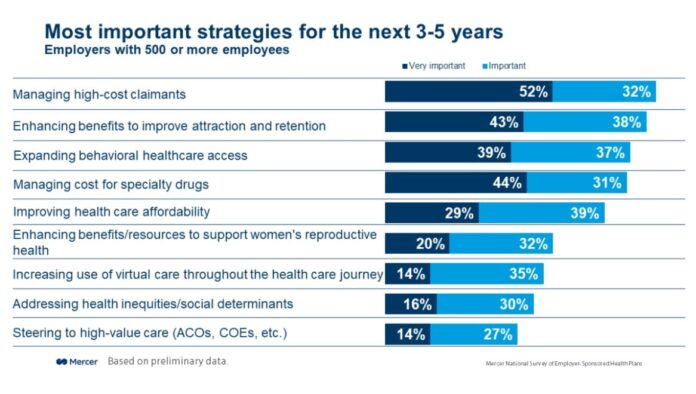

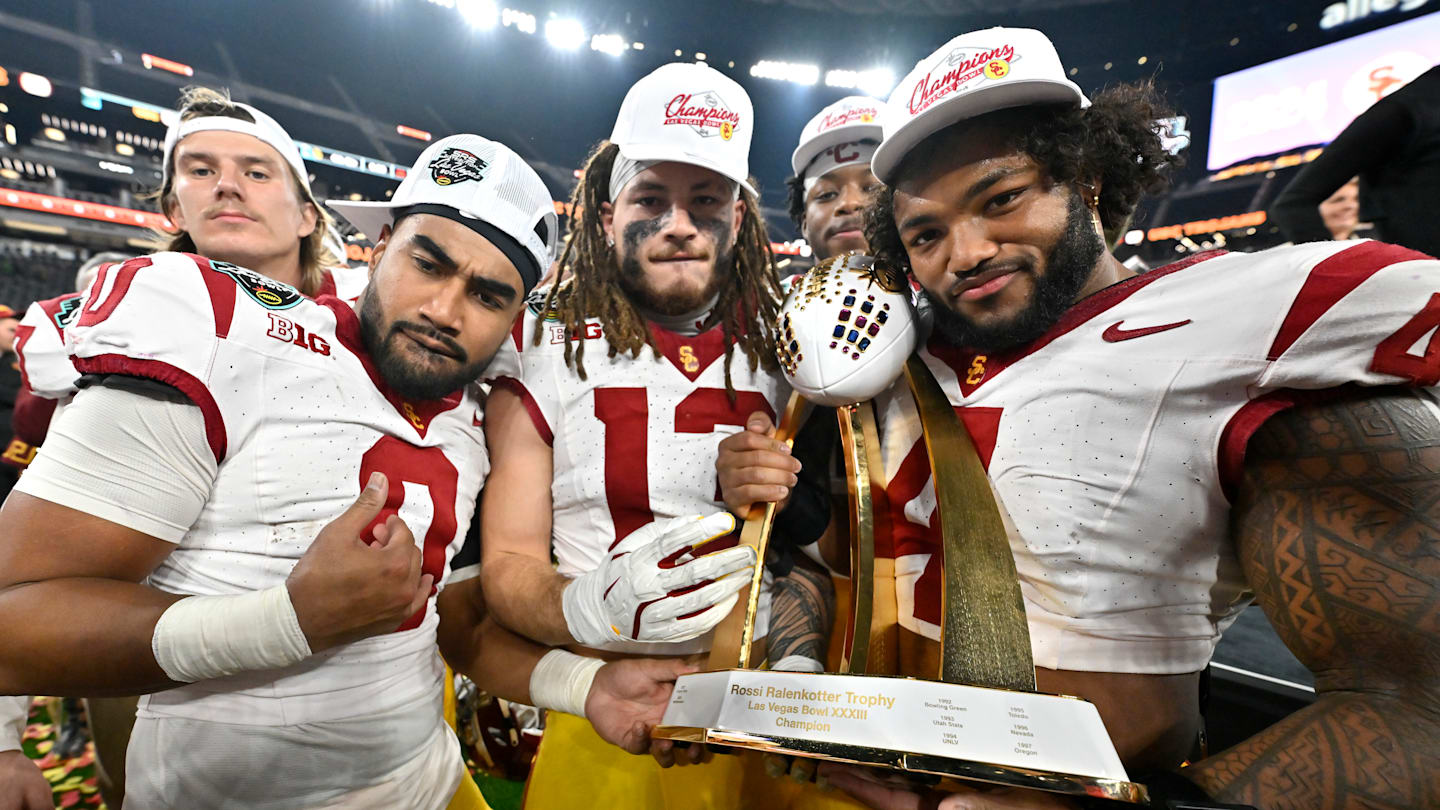
A lot of other fan bases appear to be heavily pocket watching USC. Instead of analyzing what their own recruiting efforts could be doing differently, it seems that with each opportunity that presents itself, there are a lot of efforts to dismiss anything positive that comes from the Trojan side.
The latest comes as a reaction to the latest USC commit, Mark Bowman, reportedly having NIL opportunities that can be in the range of $8-10 million for his estimated three years as a student-athlete. For some reason, these figures are drawing a lot of outrage throughout the college football nation.
Forget that the figures are a rough estimate and are taking all avenues into consideration over the course of three years. This news is seeing a lot of pearls being clutched, particularly among those fan bases who have enjoyed having a considerable advantage paying athletes, both since the inception of NIL and before it was actually allowed.
In earnest, it is not as if USC has handed Bowman or anyone a check for that amount before even stepping foot on campus as a player. This type of figure should instead highlight something that should have been known anyway.
The Trojans have a greater ability to pay student-athletes through the multiple avenues and what comes with being a part of the program. It is something of a complete mystery how people are disregarding how Los Angeles is the entertainment capital of the world and have simply not been as active or as well organized as they could have been in recent years.
All that is being reflected now is a return to the norm. Apparently that is too much of a bridge too far for others to not believe that some form of cheating or unabashed money waving is not going on.
Things are, in fact turning around at USC
What is nice about these allegations are two things. For one, it shows how worried the rest of college football is. Whether they wish to admit it or not, USC is simply following the currently agreed upon rules that all (allegedly) abide by.
More importantly, the baseless accusations are not at all what is leading to the latest recruiting successes or why many feel good about USC. Because the money aspect is a distant secondary talking point during the recruiting process, it will be clear soon enough that those who pledged themselves to join USC did so for more than a one-time big pay day.
NIL
NBA Execs Reportedly Feel ‘5, 6 or 7’ Picks Could Be Traded in 1st Round of NBA Draft
Wednesday’s NBA draft could potentially feature a flurry of trades. “Two first-round picks have already been traded, and when you talk to league executives, they think there’s five, six or seven or more in play,” ESPN’s Brian Windhorst said during Saturday’s episode of The Hoop Collective (54:55 mark). “That doesn’t mean they’ll be traded, but […]

Wednesday’s NBA draft could potentially feature a flurry of trades.
“Two first-round picks have already been traded, and when you talk to league executives, they think there’s five, six or seven or more in play,” ESPN’s Brian Windhorst said during Saturday’s episode of The Hoop Collective (54:55 mark). “That doesn’t mean they’ll be traded, but there’s several in play, including one or two [picks] in the top 10, which you don’t often see top-10 picks moved.”
While the first two picks appear set in stone, with Dallas in line to take Duke’s Cooper Flagg and the San Antonio Spurs expected to select Rutgers guard Dylan Harper, the wheeling and dealing could begin as soon as No. 3, when the Philadelphia 76ers are on the clock.
With no real consensus regarding who is the No. 3 prospect on the board—the group of Ace Bailey (who hasn’t worked out with any teams), VJ Edgecombe, Tre Johnson and Kon Knueppel, among others, appear to all be in the running—there could be movement in the top 10 as teams look to move either up or down the board.
There are also expected to be plenty of trades in general this offseason, with most teams lacking cap space, which could impact the draft as well. So it may end up being a fun, frantic event.
NIL
COLUMN
The recent departure of four of Jamaica’s top field athletes to Türkiye has reignited a longstanding and often emotional debate: Should a cash-strapped government prioritize investing in athletes when nurses, teachers, and police officers are still fighting for livable wages? It’s a fair question—but one grounded in a false choice. This issue came to the […]


The recent departure of four of Jamaica’s top field athletes to Türkiye has reignited a longstanding and often emotional debate: Should a cash-strapped government prioritize investing in athletes when nurses, teachers, and police officers are still fighting for livable wages?
It’s a fair question—but one grounded in a false choice.
This issue came to the fore again during my appearance on Lead Story on CVM TV last Friday. The suggestion was made that, in light of wage negotiations across the public sector, the government simply cannot afford to support its elite athletes. This argument, while politically expedient, ignores a key truth: investing in athletes is not a luxury or distraction—it is a strategic investment in national development, social mobility, and future economic growth.
Athletes are not entertainers performing for applause. They are cultural ambassadors, mentors, and living proof that talent, when nurtured, can transcend poverty, violence, and limited opportunity.
A Shelly-Ann Fraser-Pryce, who emerged from the volatile community of Waterhouse to become one of the greatest sprinters of all time, is not merely a track icon—she is a social blueprint. Her story tells thousands of Jamaican children growing up in similarly harsh conditions that greatness is possible. Every time a child ties their shoelaces to train on a patchy field, inspired by someone like her, a new path is being carved away from crime, hopelessness, and underachievement.
And these athletes do more than just inspire from afar. They draw the world to Jamaica. Just recently, Usain Bolt—arguably the most recognizable Jamaican alive—was named the country’s Tourism Ambassador. Why? Because of what he represents globally as the face of Jamaica. Who else could have been appointed to that role and be as effective? This is why a safer, more optimistic Jamaica, shaped in part by sport, becomes a magnet for visitors and foreign investment. An athlete like Roje Stona, had he remained and received the right support, could have also emerged as a powerful ambassador of brand Jamaica. The more we invest in our elite athletes, the more global representatives we cultivate—each one contributing to our tourism product, our national identity, and our economic prospects.

There is also real, data-backed evidence that structured investment in sport delivers tangible social returns. A 2000 study by the Australian Institute of Criminology, titled Sport and Crime: A Report on the Role of Sports in Crime Prevention (source), provides compelling insights.
The report concludes that sports-based programmes can help reduce antisocial behaviour and criminal activity, particularly among youth. It highlights that sport provides a structured outlet for energy, fosters discipline and teamwork, and promotes positive peer associations. These qualities are especially potent in communities plagued by gang violence or low academic achievement—challenges familiar to many parts of Jamaica.
In short: support for sport is support for public safety.
And for those who prefer to speak in dollars and cents, here’s the economic truth: sport pays back—often many times over. Major global events such as the Olympics and World Championships generate billions in tourism, merchandise, broadcast rights, and investment. But even on a smaller scale, successful athletes create economic ripple effects.
From endorsement deals and brand ambassadorships to local club growth and sporting clinics, athletes fuel an entire ecosystem. When they train and win in the national kit, Jamaica benefits—economically, diplomatically, and reputationally.
The Australian study goes further, linking sports investment to increased government revenue. A healthier, more engaged youth population reduces long-term healthcare and policing costs. A booming sports economy creates jobs. The contribution of sport to the national economy also potentially increases government revenue, thereby creating greater fiscal space. With that expanded fiscal room, the government is ultimately in a stronger position to afford more agreeable wages for civil servants—including the very nurses, teachers, and police officers at the centre of the wage debate.
These dynamics, if harnessed strategically, can power a more sustainable and balanced approach to national development.
The idea that we must choose between paying civil servants and supporting athletes is a false binary. In fact, it is poor planning and vision that pits them against each other. Jamaica must build a development model that recognizes how all sectors—education, healthcare, security, and sport—are interconnected. Undervaluing one only weakens the rest.
No one is suggesting that nurses, police officers or teachers be paid less. But just as the country needs skilled professionals to teach, protect, and heal, we also need athletes who can inspire, lead, and elevate Jamaica on the world stage.
The moment we treat our best athletes as expendable, we risk not just losing medals, but losing an entire generation of young people who might have followed their lead.
And if we fail to see the wisdom in keeping our best at home, others—like Türkiye—certainly will.
Leighton Levy is a veteran sports journalist and Content Editor at Sportsmax.TV. He is passionate about Caribbean athlete development and the intersection of sport, culture, and nation-building.
NIL
Nike's Brand is Strong, But Pressures Are Mounting
Introduction Few would dispute that Nike (NYSE:NKE) remains one of the most iconic brands in athletic fashion, with a track record of defining culture, bringing impressive levels of innovation, and delivering at scale globally. However, 2025 is proving to be a challenging year for many of the world’s largest retailers, with mounting pressures from geopolitical […]


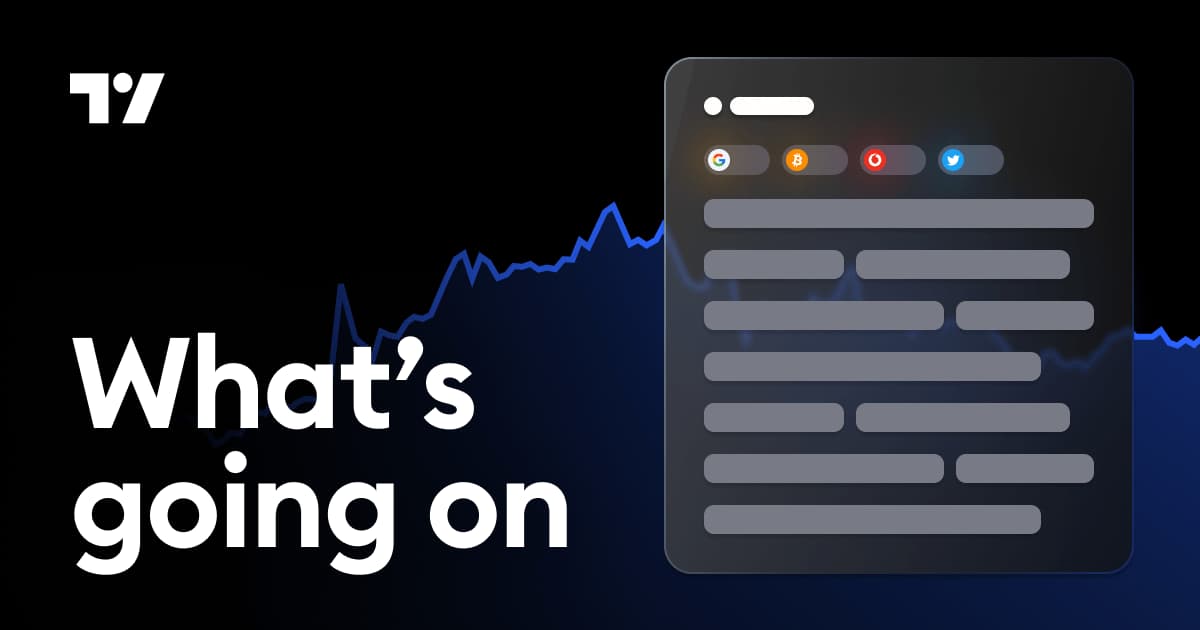
Introduction
Few would dispute that Nike (NYSE:NKE) remains one of the most iconic brands in athletic fashion, with a track record of defining culture, bringing impressive levels of innovation, and delivering at scale globally. However, 2025 is proving to be a challenging year for many of the world’s largest retailers, with mounting pressures from geopolitical tensions, rising threats to supply chains, and uncertain trading conditions. I see shares in the company trading close to fair value, so while Nike is likely going nowhere any time soon, the catalysts that have made it investible over the last few decades are not really working for now.
Company Overview
One of the most instantly recognisable brands in the world, Nike has been designing, marketing and selling athletic footwear, clothing, and equipment since 1964. It generally operates across direct to consumer sales channels, delivering just over $50 billion in revenue in FY24. Net margins during this period were a solid 9%, well above the median average of peers at 5%. However, there will be concerns that this growth appears to be faltering, with the share price down over 35% in a year, forward revenues expected to drop by 4%, and EPS sliding 16%. Following the events of the pandemic, a shift towards direct to consumer business was meant to deliver premium margins and a closer relationship with customers. Although there were signs in previous quarters that this was developing, the wider economic landscape globally has taken a significant toll on the balance sheet. Rising costs in logistics, weakening demand, and discounting from competitors have all hit margins more than management would have liked to see.
With so much of the company’s logistics network in China, Vietnam and Indonesia, the recent tariff tensions have put enormous stress on the profitability analysts are expecting over the coming years, with some suggesting that as much as [url=”]95[/url]% of profits could be at risk in the worst case scenario.
Of course, Nike is not the only company dealing with this landscape, but with newer brands amassing loyal followings from social media and more dynamic brand campaigns, firms such as Lululemon are seeing surges in key markets, such as women-led athleisure. Nike is clearly making moves to correct this, with a partnership with [url=”]Skims[/url] likely to roll out in 2026, but it suggests that the firm is perhaps on the backfoot with these emerging trends.
The Bull/Bear Balance
That said, there is enormous strength in the Nike brand, with a track record of cash-generation, innovative campaigns, and huge deals with athletes such as LeBron James and Kylian Mbappe. From an investor perspective, the 2.7% dividend yield adds a decent level of appeal alongside a strong balance sheet, especially in a period of market transition where some of these newcomers appear to be losing share even faster than some of the more established players.
From my perspective, the real weakness comes from relatively weak momentum and a rather expensive valuation. With a forward P/E sitting at about 31x, EV/EBITDA at 16x and P/S at about 2x, the company’s key metrics are at a decent premium despite not necessarily having the growth to justify them. Following the latest Q4 earnings report, which indicated that inventory clearance is underway, many analysts have slashed expectations, with management forecasting revenue decline of between 8-10%.
Digging into the valuation, I’ve developed a discounted cash flow (DCF) model based on the following inputs:
- Terminal growth: 2.5% based on industry,
- WACC: 8% based on industry and peers,
- Revenue CAGR 5Y: 2%,
- EBIT Margin: approx. 11%.
With these assumptions applied, a fair value of shares comes to about $52 per share. This can be closer to $62 in a more optimistic scenario where top line growth exceeds 5%, and with 13-14% margins, but even in this case, I’d not expect to see much more than 10% returns for investors in the near-term.
Looking across the market to peers with slightly more appealing valuations, such as Adidas with P/E of 15x, I feel that it is hard to get excited about this premium as a new investor.
Analyst Perspectives
Of course, there are plenty of reasons to justify both perspectives, and the divided ratings from Wall Street reflect this well. With 63% of analysts now appearing to be behind Buy or Strong Buy ratings, and 35% holding neutral ratings, I appear to be in the relative minority on the bearish side of the spectrum.
Recent upgrades in the Nike coverage from analysts match this, with about 23 upward revisions for EPS guidance, and just 4 downgrades, suggesting that cost control and potential products reflect opportunities looking ahead. That said, top-line expectations for revenue forecasts have been much more negative.
From my perspective, I have my eye on the next earnings report on June 27th. Investors will be keen to understand the latest inventory levels and strategy for approaching markdowns going forward, but mostly will look to the trend in gross margins.
I’d also want to see some more promising performance, particularly in the critical Chinese market, and hear some progress towards new innovations which will keep investors on-side. Investors will likely want to hear exactly where margin targets are landing for management, and the response being taken to fierce competition across multiple sectors.
Closing Thoughts
By no means is the investor thesis for Nike broken, but I fear that it is nowhere near as strong as the valuation may justify. It is still an elite brand across multiple markets, with strong profitability and operational discipline during a volatile period.
However, I feel that it is far from an automatic pick for investors at present, with growth looking uncertain, and a valuation which leaves little room for error. Investors may be rewarded for patience at this stage, especially if innovation and cost control works out in a negative market backdrop, but I suspect there may be safer opportunities elsewhere. Until management are able to present tangible evidence that revenue is accelerating, and that the brand is moving ahead of leaner competitors, I’ll be keeping my distance.
NIL
Auburn basketball adds Matt Gatens as general manager
Auburn brings back a familiar name in Matt Gatens as general manager for basketball On Friday, Auburn announced a new addition to the men’s basketball team with Matt Gatens returning to be the general manager. Gatens is leaving the Iowa Hawkeyes where he was an assistant coach the last three seasons. He was a graduate […]
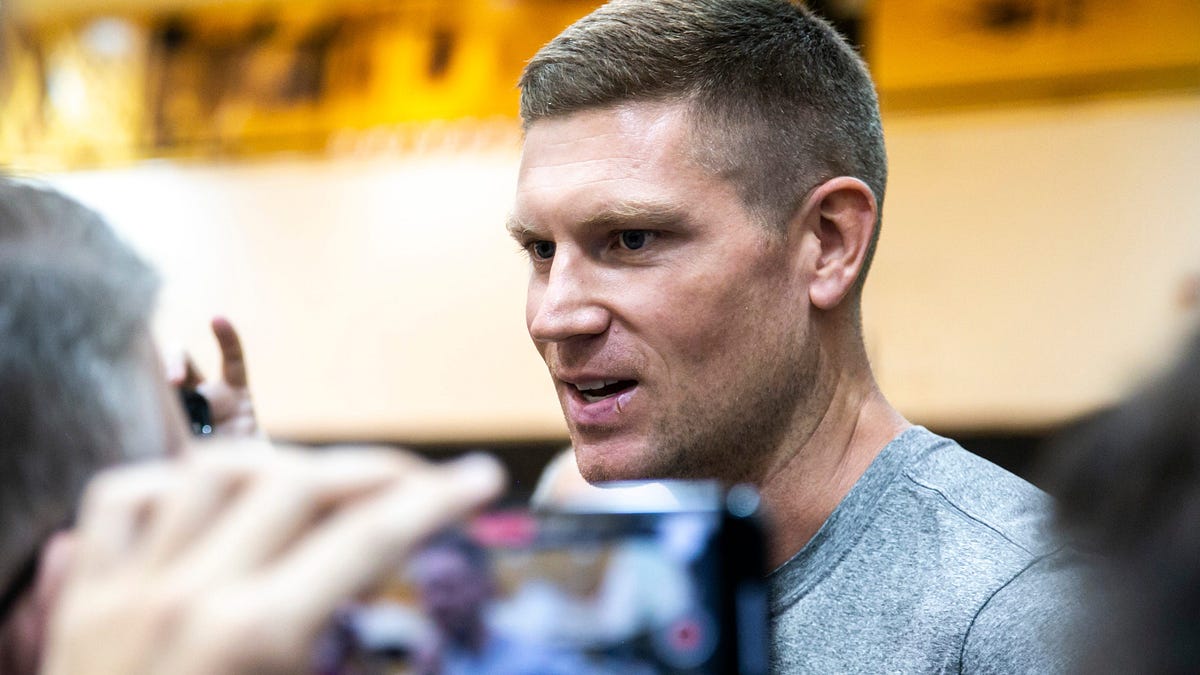
Auburn brings back a familiar name in Matt Gatens as general manager for basketball
On Friday, Auburn announced a new addition to the men’s basketball team with Matt Gatens returning to be the general manager. Gatens is leaving the Iowa Hawkeyes where he was an assistant coach the last three seasons. He was a graduate assistant for the Tigers from 2016-18 before becoming an assistant coach at Drake from 2019-22. Per the official press release, Gatens will handle roster management and evaluation, agent and donor relations, scouting, recruiting, and game planning.
In the ever-changing landscape of college athletics with NIL teams are adding a general manager to their coaching staffs. Head coach Bruce Pearl knew the importance of having someone in that role. Pearl was quoted in the release saying, “It was important for me to have someone who had strong experience and understanding the challenges of Name, Image and Likeness”. He also added, “I also wanted someone who could help us not only be the best we can be in NIL, but also with managing player and roster development.”
Gatens was part of the Tigers program the year before the 2019 Final Four run. Two key players he coached from that team were Bryce Brown and Jared Harper. He will be a key part of finding more players of that quality for the Tigers.
He played his college career for Iowa from 2019-22 where he was a two-time All-Big Ten player. During his career as the Hawkeyes point guard, Gatens averaged 12.8 points per game and shot 37% from the three-point line. After his college career was over he spent time playing professionally in Europe and the NBA G-League. Gatens will transition to his new role smoothly with his experience coaching for Pearl and the Tigers.
Contact/Follow us @TheAuburnWire on X (Twitter), and like our page on Facebook to follow ongoing coverage of Auburn news, notes, and opinions. You can also follow Phillip on Twitter @PJordanSEC
NIL
College football's dynamic duos
The only thing more unstoppable than one star player is two star players. That is even more true when those weapons work in tandem, like in Penn State’s running back room where Nicholas Singleton and Kaytron Allen are about to embark on their fourth year together in college football’s most productive backfield timeshare. That dynamic […]
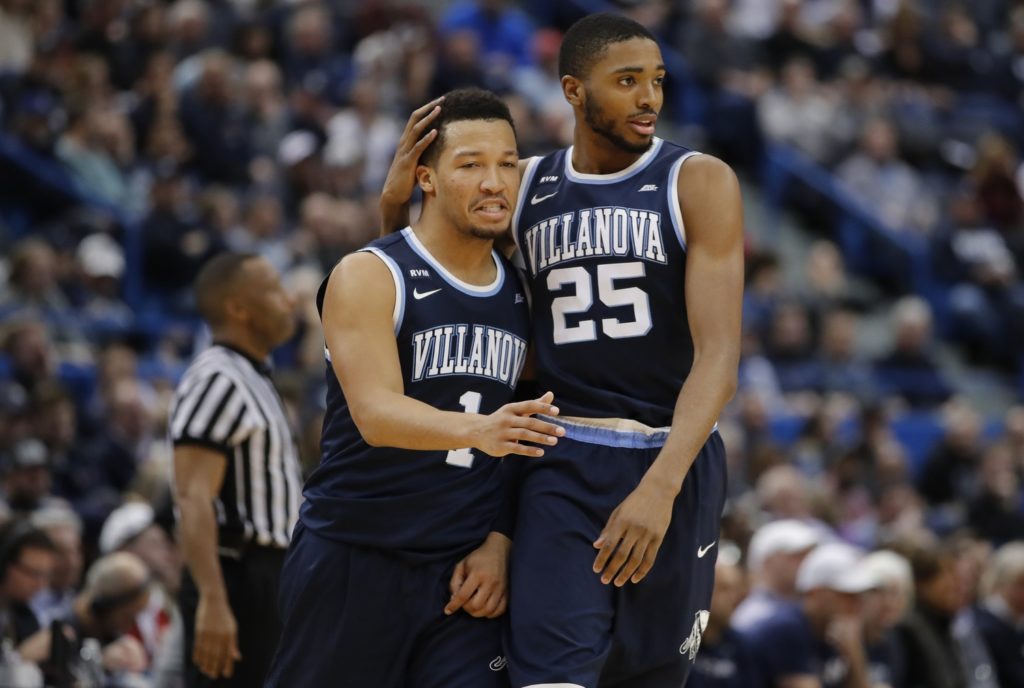

The only thing more unstoppable than one star player is two star players. That is even more true when those weapons work in tandem, like in Penn State’s running back room where Nicholas Singleton and Kaytron Allen are about to embark on their fourth year together in college football’s most productive backfield timeshare. That dynamic duo is just one example of a one-two punch that will define the race to the College Football Playoff and national championship.
Some pairings work across positional lines. There are few factors more difficult to contain in modern college football than a prolific quarterback-receiver combination, and the sport features a number of them in 2025. Some are more difficult to predict than others, though, with the immense amount of turnover at the quarterback spot across the top national title-contending programs.
The best duos are often the ones whose components set each other up for success. At Texas, for example, opposing offensive lines cannot focus too much on blocking young edge rusher Colin Simmons, or else Anthony Hill Jr. will storm in and disrupt the pocket from the linebacker spot.
From Bill Belichick to Rich Rodriguez: Grading first-year college football coaches’ 2025 rosters
David Cobb
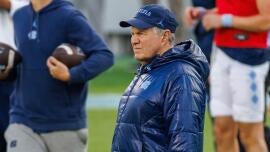
Here are college football’s top dynamic duos for the 2025 season:
The Penn State running backs have been the definition of a dynamic duo since they signed together as blue-chip recruits in the 2022 class. Singleton and Allen split the ballcarrying duties from their freshman year onward, and their return for a fourth year in the best running back group in the country is one of the primary reasons why this might be the year the Nittany Lions break through for a national championship.
Neither Singleton nor Allen has ever rushed for fewer than 752 yards or six touchdowns in a single year. Last season was the first time they both crossed the 1,000-yard mark, and they combined to find the end zone 20 times on the ground and seven times through the air. They carried the Penn State offense at times throughout the run to the CFP semifinals and could face lighter boxes in 2025 with Drew Allar and the passing game likely to take a leap forward.
2. LB Anthony Hill Jr. & EDGE Colin Simmons, Texas
No tandem is as fearsome in the pass rush than Anthony Hill Jr. and Colin Simmons, both of whom hauled in All-American honors last season as disruptors on the Texas defensive front. Hill is back as college football’s most heralded linebacker, fresh off a campaign in which he led the SEC in tackles for loss (17) and forced fumbles (four) and Simmons returns as one of the nation’s top young defenders after a nine-sack true freshman campaign.
Simmons does his work off the edge while Hill mans the middle of the Longhorns defense as a do-it-all linebacker. They are just as formidable in run defense as they are at rushing the quarterback, and that they are back in the lineup this year is a key development for a Texas unit that lost a pair of stalwarts from last season’s defensive front to the NFL.
Jeremiah Smith was arguably the best wide receiver in college football as a true freshman. Imagine what he can do with a full year of experience under his belt. The Ohio State superstar enjoyed one of the most prolific freshman seasons the sport has seen in some time with his Big Ten-best 1,315 yards and 15 touchdowns, which more than delivered on the insane expectations he generated ahead of his Buckeyes debut. The only uncertainty around his 2025 ceiling stems from the quarterback spot, where a new starter will rise to the top of the depth chart, most likely in the form of Julian Sayin.
The Ohio State receiving corps was far from a one-man show in last year’s national championship run, though, and it will not be in 2025, either. Carnell Tate was a terrific third option in Year 2 with the program and looks poised to flirt with the 1,000-yard threshold himself as he picks up a greater share of the target load. After all, he managed to accumulate 733 yards in a room that featured high-volume weapons in Smith and Emeka Egbuka.
The Clemson defense took its lumps in 2024 but looks poised for a potentially dominant season with Tom Allen stepping into the coordinator role. He inherited an uncanny amount of returning production, and it all starts up front with perhaps the nation’s top returning defensive lineman in Peter Woods and an unstoppable edge rusher in T.J. Parker. That pair was already monstrous in the trenches but could take its production to an even higher level under Allen’s guidance.
Parker was absurd as a sophomore with his ACC-best six forced fumbles, 20 tackles for loss and 11 sacks. He is an early first-round talent in the making who could very well average a sack per game in what will almost certainly be his last year with the Tigers. Woods, meanwhile, is a 315-pound force who is at his best when he mans the interior defensive line, and he should be the first defensive tackle taken in next year’s draft if all goes according to plan.
The top returning quarterback-receiver tandem in college football resides in the desert. Sam Leavitt and Jordyn Tyson took the nation by surprise last year when they fueled Arizona State’s stunning climb to the top of the Big 12 and into the College Football Playoff, and their familiarity with each other and the Sun Devils offense lends itself to lofty expectations for the second go-around.
Tyson missed the conference title game and CFP quarterfinals with an injury but will be back at full strength to start the 2025 campaign. He racked up at least 125 yards in each of his final three outings before he broke his collarbone. With his top weapon back in the lineup, Leavitt projects as a Heisman Trophy contender in his second year at Arizona State. He flew under the radar to an extent when he moved from Michigan State as a four-star transfer but delivered on his former blue-chip recruit pedigree and gave reason to believe he could be a Day 1 pick in next year’s draft.
Honorable Mentions
WRs Antonio Williams & Bryant Wesco Jr., Clemson
Clemson’s abundance of riches features a second dynamic duo, this one on the offensive side of the ball. Quarterback Cade Klubnik might have the best receiving unit in the nation at his disposal, and Antonio Williams and Bryant Wesco Jr. lead the group.
WRs Ryan Williams & Germie Bernard, Alabama
If not for the star at Ohio State, Ryan Williams would have been the face of last year’s freshman class. He can be a 1,000-yard star for Alabama so long as the quarterback situation allows. Germie Bernard actually outpaced Williams in catches after he transferred over from Washington, and his old offensive coordinator, Ryan Grubb, should know how to get the most out of him now that they are reunited.
WRs Cam Coleman & Eric Singleton Jr., Auburn
The other half of the Iron Bowl rivalry features an outstanding receiving tandem, too. Cam Coleman is about as exciting of a young talent as his sophomore classmate at Alabama, and Eric Singleton Jr. raises the Auburn offense’s ceiling as the top-ranked receiver in the 2025 transfer portal cycle.
NIL
Louisville baseball’s Bayram Hot enters NCAA transfer portal
Louisville baseball’s Bayram Hot has entered the NCAA transfer portal, On3’s Pete Nakos confirmed. Hot played one season with the Cardinals. Hot saw action in 36 games for Louisville in 2025. Across 92 at-bats, Hot averaged a .326 batting average to go with 30 hits, 22 RBIs and three home runs. 2025 was Hot’s third […]

Louisville baseball’s Bayram Hot has entered the NCAA transfer portal, On3’s Pete Nakos confirmed. Hot played one season with the Cardinals.
Hot saw action in 36 games for Louisville in 2025. Across 92 at-bats, Hot averaged a .326 batting average to go with 30 hits, 22 RBIs and three home runs.
2025 was Hot’s third season at the collegiate level, spending his first two years at Marist. There, he earned 2023 MAAC Rookie of the Year honors after finishing his true freshman season with a .382 batting average across 50 games played. Hot wasn’t a home run threat, but logged 73 hits, scoring 47 runs, 37 RBIs and 19 extra base hits.
In 2024, Hot’s batting average regressed to a career-low .278. That doesn’t mean he wasn’t productive, however. As a sophomore, he logged career highs in walks (29) and home runs (7).
Hot then transferred to Louisville, where the Cardinals finished the 2025 season with a 42-24 overall record. They reached College World Series for the sixth time in program history and the first since 2019. Their record allowed the program to surpass the 40-win threshold for the 14th time in program since Dan McDonnell came to the program 19 seasons ago. Before his arrival, Louisville baseball had never reached that win total.
Now, Hot will have one year of eligibility remaining to play for his new college baseball team. Chose Louisville over Kentucky, Mississippi State, East Carolina, Kansas, Michigan and Maryland. It’s unclear if any of these teams will pursue him in the portal this cycle. Whichever program it will be, it’ll be Hot’s third in four seasons.
The transfer portal wire provides a real-time feed of player activity, including basic player profile information, transfer portal ranking and original On3 Industry recruiting ranking, as well as NIL valuation (name, image and likeness).
To keep up with the latest players on the move, check out On3’s Transfer Portal wire. The On3 Transfer Portal Instagram account and Twitter account are excellent resources to stay up to date with the latest moves.
-

 High School Sports2 weeks ago
High School Sports2 weeks agoParents Speak Out As Trans Pitcher Throws Shutout In MN State Quarterfinals
-

 Professional Sports2 weeks ago
Professional Sports2 weeks ago'I asked Anderson privately'… UFC legend retells secret sparring session between Jon Jones …
-

 Health2 weeks ago
Health2 weeks agoOregon track star wages legal battle against trans athlete policy after medal ceremony protest
-

 Professional Sports2 weeks ago
Professional Sports2 weeks agoUFC 316 star storms out of Media Day when asked about bitter feud with Rampage Jackson
-

 Motorsports1 week ago
Motorsports1 week agoNASCAR Weekend Preview: Autódromo Hermanos Rodríguez
-

 Rec Sports3 weeks ago
Rec Sports3 weeks ago2x NBA All-Star Reacts to Viral LeBron James Statement
-

 College Sports3 weeks ago
College Sports3 weeks agoOKC’s Mark Daigneault knows what it takes to win championships. His wife has won a ton of them
-

 NIL2 weeks ago
NIL2 weeks agoPatrick Mahomes in OKC for WCWS, praises NiJaree Canady and Texas Tech
-

 Motorsports3 weeks ago
Motorsports3 weeks agoCorey LaJoie to make nine NASCAR Truck Series starts with Spire Motorsports
-

 College Sports2 weeks ago
College Sports2 weeks agoFull 2025 Women’s College World Series Finals Schedule




































